[deep philosophical engineering talk=on]
To best understand my viewpoint on this we need to first start at the most basic pricipal in stability, the "Stability Triangle". Engineering minded people will already understand this, but ill explain anyway.
Here is a very crude paint drawing of a car, this basic rule can apply to any car, it can be a troopy, patrol, or one of those hillman gimps even. For the purpose of this explanation its just a car.
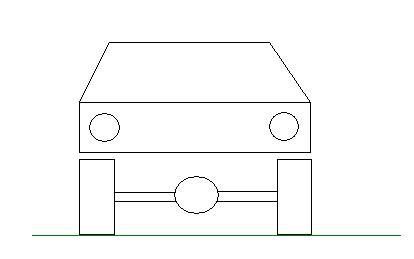
Now lets add the "Stability Triangle" to the car. The pivot points, or fulcrums at which the vehicle will roll around are the outer edges of the tyre. Lets assume that the distance between outer edges of the left and right tyres is excactly 2m. Also we will assume that the COG of the car is in the dead centre between the outside edges of the tyre and excactly 1m from the ground. The weight of the vehicle is 1 metric ton.
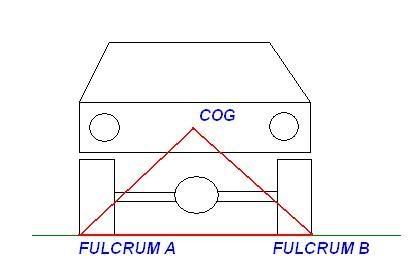
Lets add the weight component of the car to the triangle now. There are no external factors that are affecting this component, such as cornering forces, acceleration or braking. So the weight off the COG is dead vertical, the only force affecting it is gravity (the first layer anyway).

Now because we have 2 right angle triangles making up the stability triangle the angles at the fulcrums are both 45 degrees. If we were to tilt the car over the the left 45 degrees the left hand side of the triangle is now vertical. Like this......
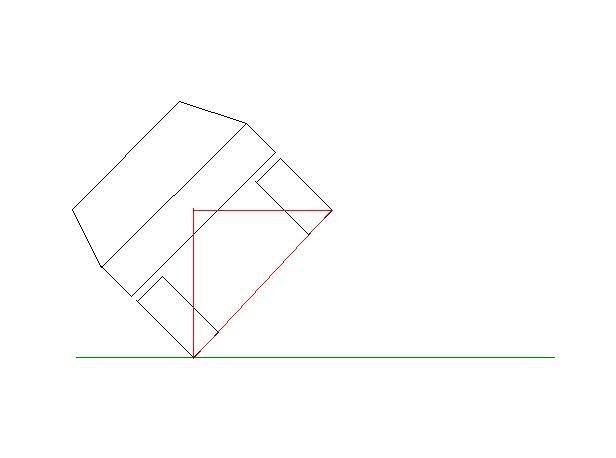
Now the position of the COG relative to the car hasnt changed, its still in the same spot. The vehicle has no suspension travel and its wheels magically do not deform, so the triangle remains the same dimensions and moves in perfect unisen with the car. Now we add the weight of the car to the COG. Because gravity is perpendicular to the horizontal ground it swings much like a pendulum hanging from the top of the triangle as the vehicle rolls to its side, the force is still acting on the COG. Now that the left hand side of the triangle is vertical it is also totally parralell to the weight component acting on the COG. In a perfect world the vehicle would now be perfectly balanced on its side.
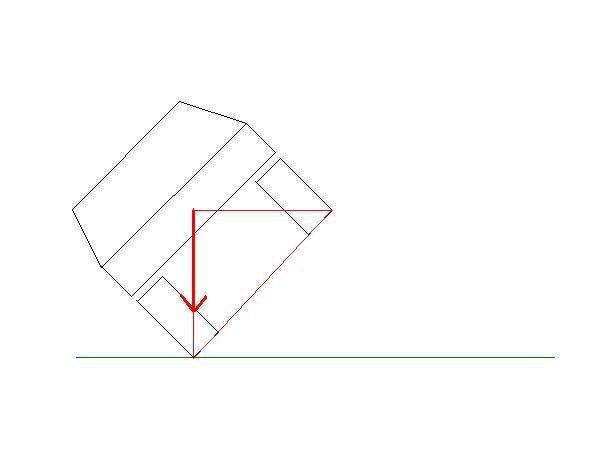
Im going to now just draw the triangles because by now you should know where the corners are on the car. This last picture demonstrates what would happen if you were to tip the car further to the left or further to the right.
Further to the left and the weight component arrow is now OUTSIDE this triangle, because there is no external cornering, braking or acceleration force the vehicle is now going to begin to roll over to the left. In the other drawing you can see that the weight component arrow is still inside the triangle. Again, no corning, braking or acceleration exists so this vehicle will roll back until both wheels hit the ground.
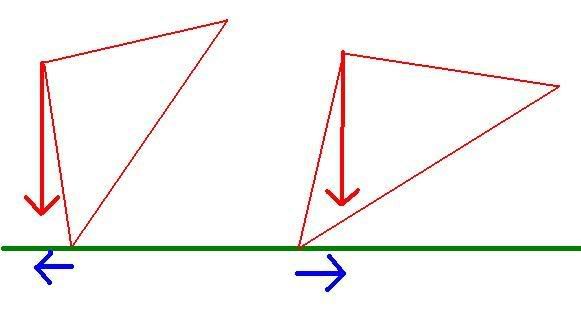
Ive got to get back to work now, so I will further my explanition when I get home from work when I will add other factors like cornering, raising and lowering the suspension and other things that will be going on in a more dynamic sense.
[/deep philosophical engineering talk]
My brain hurts.







